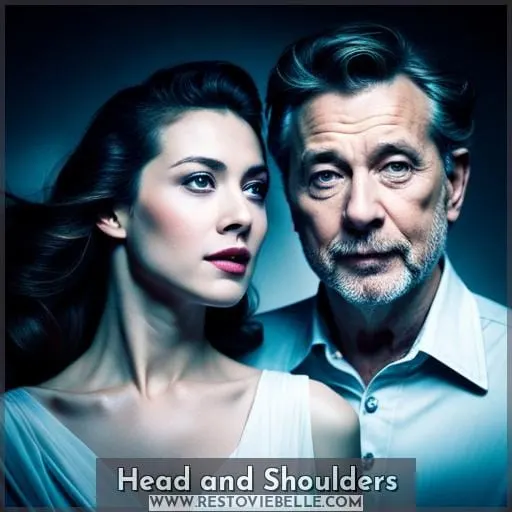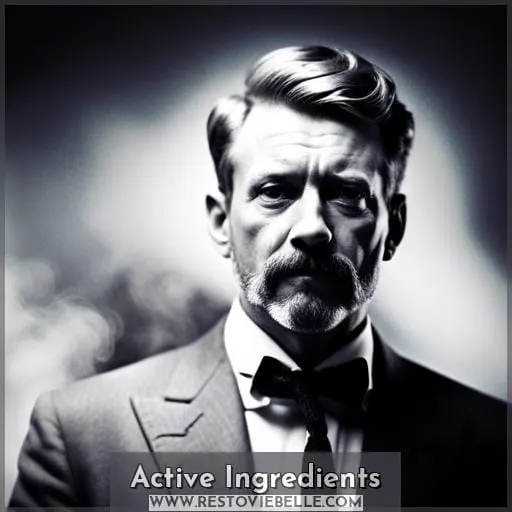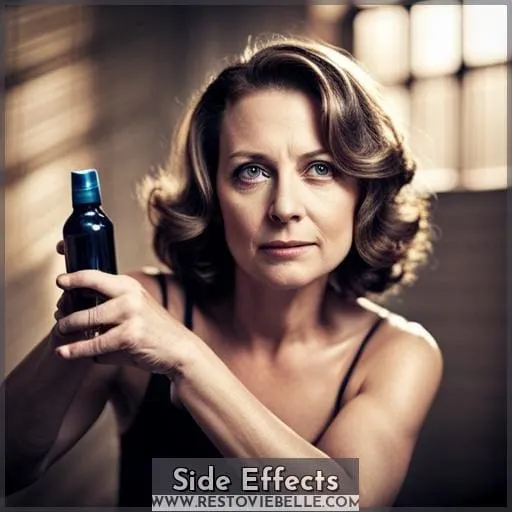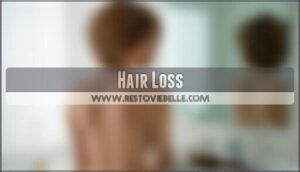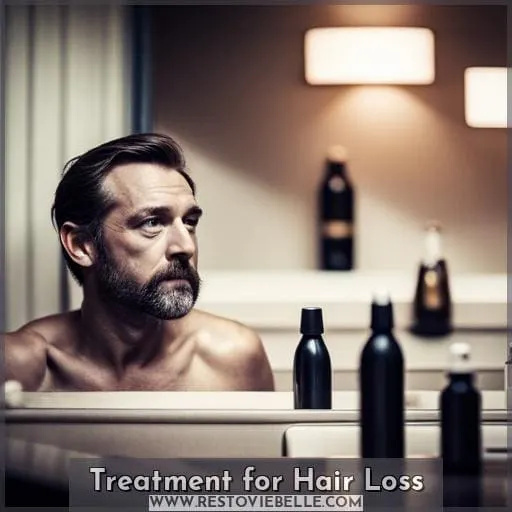This site is supported by our readers. We may earn a commission, at no cost to you, if you purchase through links.
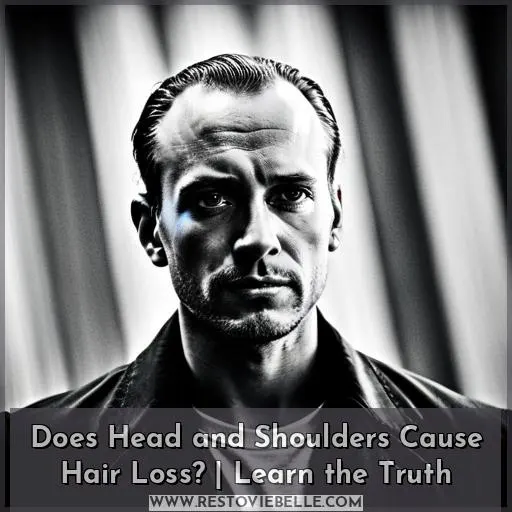 You are wondering whether Head and Shoulders causes hair loss. The short answer is no, but there are some potential side effects that can cause hair loss, such as irritation and allergic reactions.
You are wondering whether Head and Shoulders causes hair loss. The short answer is no, but there are some potential side effects that can cause hair loss, such as irritation and allergic reactions.
Table Of Contents
Key Takeaways
- Classic Head and Shoulders does not cause hair loss.
- Clinical Strength Head and Shoulders may cause hair loss if used too often or in high concentrations.
- Zinc pyrithione is an antifungal agent that may have hair growth benefits.
- Selenium sulfide is a keratolytic agent that can cause hair loss if used too often or in high concentrations.
Head and Shoulders
Head and Shoulders is a brand of anti-dandruff shampoo that contains the active ingredients zinc pyrithione and selenium sulfide.
It’s effective at treating dandruff, but it can also cause side effects such as:
- Skin irritation
- Dry scalp
- Hair discoloration
There’s no evidence to suggest that Head and Shoulders causes hair loss, but it’s possible that it could worsen underlying hair loss conditions.
Does Head and Shoulders Cause Hair Loss?
No, there’s no solid evidence that classic Head and Shoulders shampoo causes hair loss.
However, Head and Shoulders Clinical Strength contains an ingredient that can be harsh on the hair and has been linked to hair loss in some cases if not used properly.
Active Ingredients
Head and Shoulders contains two active ingredients:
- Zinc pyrithione
- Selenium sulfide
Zinc pyrithione is an antifungal agent that helps to reduce dandruff.
Selenium sulfide is a keratolytic agent that helps to remove dead skin cells from the scalp.
Zinc Pyrithione
Zinc pyrithione is the active ingredient in Head and Shoulders Classic.
It has antifungal properties, may have hair growth benefits, and is safe for daily use.
However, it can cause contact dermatitis in some people.
Selenium Sulfide
Selenium sulfide is another active ingredient in Head and Shoulders that can help treat dandruff.
It works by killing the fungus that causes dandruff.
However, it can also cause hair loss if used too frequently or in high concentrations.
Side Effects
Now that we’ve explored the active ingredients in Head and Shoulders, it’s time to delve into its potential side effects. It’s important to be aware of these possible outcomes to make an informed decision about using this popular anti-dandruff shampoo.
- Dry Scalp: Some users have reported experiencing dryness on their scalp after using Head and Shoulders. This can lead to discomfort or itchiness.
- Hair Discoloration: In rare cases, certain formulations of Head and Shoulders containing selenium sulfide may cause temporary discoloration of the hair shafts, resulting in a yellowish hue.
- Damage to Jewelry: Due to its active ingredient zinc pyrithione, prolonged contact with silver, gold, or metallic jewelry while using this shampoo could potentially cause damage.
While these side effects are uncommon and usually mild if they occur at all when used according to instructions provided by the manufacturer1), it’s essential always exercise caution when introducing new products into your hair care routine.
Hair Loss
Hair loss can be a concerning issue, but it’s important to understand the different causes.
- Alopecia areata is an autoimmune condition that leads to hair loss in patches on the scalp and other areas of the body.
- Telogen effluvium occurs when there’s a disruption in your hair growth cycle, causing excessive shedding.
- Hair breakage can result from various factors such as heat styling, chemical treatments, or harsh brushing techniques.
It’s crucial to identify the underlying cause of your hair loss before determining appropriate treatment options.
(Source: Healthline)
Alopecia Areata
If you’re experiencing hair loss, Alopecia Areata may be the cause. This condition is characterized by patchy hair loss on the scalp or other parts of the body.
The exact causes of alopecia areata aren’t fully understood, but it’s believed to be an autoimmune disorder where the immune system mistakenly attacks hair follicles.
Symptoms may include round bald patches and regrowth that occurs spontaneously or with treatment.
There are different types of alopecia areata, including partial or complete loss of scalp hair (alopecia totalis) or all body hair (alopecia universalis).
The prevalence of alopecia areata varies widely among populations and can affect both men and women at any age.
Telogen Effluvium
Experiencing hair loss? Telogen effluvium could be the cause.
This condition occurs when there’s a disruption in the hair growth cycle, leading to excessive shedding of hairs.
Common causes include physical or emotional stress, hormonal changes, and certain medications.
Symptoms may include noticeable thinning of hair and increased shedding during brushing or showering.
Treatment options vary depending on the underlying cause but can include managing stress levels and addressing any nutritional deficiencies.
Prevention involves maintaining a healthy lifestyle and avoiding triggers that may contribute to telogen effluvium.
(Source: Mayo Clinic)
Hair Breakage
Hair breakage is another common cause of hair loss, and it can be caused by a variety of factors, including:
- Excessive heat styling
- Chemical treatments
- Harsh brushing
To prevent hair breakage, it’s important to use gentle hair care practices and avoid over-manipulation. Using products specifically designed for strengthening and protecting the hair can also help minimize breakage.
Regular trims to get rid of split ends are essential in preventing further damage.
Treatment for Hair Loss
If you’re noticing hair loss, figuring out the cause is the first step. Avoiding some hair care products or switching to milder options may solve the problem, allowing hair to regrow on its own.
If the cause is more serious, there are a number of treatment options available, including:
- Minoxidil (Rogaine)
- Finasteride (Propecia)
- Immunosuppressants
- Hair transplants
- Laser therapy
- Platelet-rich plasma therapy
Frequently Asked Questions (FAQs)
What is the difference between Head and Shoulders Classic and Clinical Strength?
Head and Shoulders Classic contains pyrithione zinc, while Clinical Strength contains selenium sulfide.
Classic is intended for daily use and is best for mild-to-moderate dandruff, while Clinical Strength is applied less frequently and is best for severe dandruff.
What are the other ingredients in Head and Shoulders besides zinc pyrithione and selenium sulfide?
In addition to zinc pyrithione and selenium sulfide, Head & Shoulders contains other ingredients such as:
- Salicylic acid
- Coconut oil
- Methylisothiazolinone
- Sodium lauryl sulfate
- Sodium chloride
What are the side effects of Head and Shoulders?
Head and Shoulders may cause:
- Skin irritation
- Temporary hair discoloration
- Dry scalp
- Damage to silver, gold, and metallic jewelry.
What causes hair loss?
Dandruff can overlap and sometimes worsen underlying hair loss that’s not linked to dandruff.
Some common causes of hair thinning include:
- Androgenetic alopecia
- Alopecia areata
- Telogen effluvium
- Hair breakage
What are the treatments for hair loss?
There are many treatments for hair loss, including:
- Minoxidil, which helps stimulate hair growth.
- Finasteride, which blocks an enzyme that converts testosterone to DHT.
- Immunosuppressants, which can help if an autoimmune condition is driving hair loss.
Conclusion
While Head and Shoulders is generally safe to use, it’s possible to experience side effects such as irritation and allergic reactions that can lead to hair loss.
If you’re concerned about hair loss, talk to your doctor or a dermatologist.
